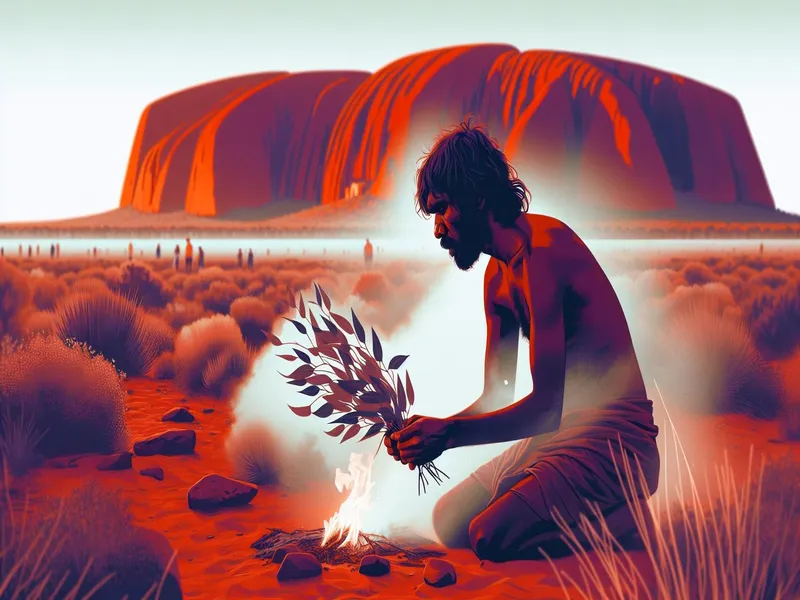
From the ancient customs of Aboriginal Australians to the unique practices of Polynesian islands, this region promises unforgettable adventures.
Ignoring the cultural aspects of travel means missing out on authentic connections and profound insights. You might find yourself skimming the surface, never truly understanding or appreciating the places you visit. That’s a missed opportunity for meaningful experiences.
Having explored various corners of Oceania myself, I’ve uncovered hidden gems and local secrets that most travelers overlook. My firsthand knowledge ensures you’ll get insider tips for a culturally enriching journey.
Whether you’re a history buff, an adventure seeker, or someone looking to connect with indigenous communities, this guide will cater to your interests. For more exciting travel activities, check out our detailed articles here.
I know how daunting it can be to plan such trips. Trust me; I’ve been there too. But with my guidance, you’ll feel like you’ve got a friend helping you every step of the way.
Overview Of Cultural Travel In Oceania
Cultural travel in Oceania is like opening a treasure chest of diverse traditions and histories. Imagine wandering through the vast landscapes of Australia, where you can connect with Aboriginal communities who have stories that span over 60,000 years. I remember visiting Uluru and feeling the profound spiritual significance as local guides shared Dreamtime stories—it’s an experience that stays with you.
Engaging With Local Cultures
When you jump into cultural travel here, you’re not just seeing sights; you’re engaging deeply with the people. For instance, in New Zealand, spending time in a Māori marae (meeting ground) allows you to participate in traditional ceremonies like the haka, which isn’t just a dance but a powerful expression of community and heritage. These moments are way more enriching than any souvenir shopping spree.
Hidden Gems And Insider Tips
Finding those off-the-beaten-path experiences makes your trip unforgettable. One tip: don’t skip Vanuatu’s smaller islands. I once stumbled upon a village where locals perform age-old rituals involving sand drawings—a UNESCO-recognized art form that’s mesmerizing to watch. Trust me, these hidden gems offer insights into daily life that you won’t find in guidebooks.
Here are some must-visit spots for cultural immersion:
- Taronga Zoo’s Nura Diya Tour: Led by Aboriginal guides who share indigenous perspectives on native wildlife.
- Polynesian Cultural Center in Hawaii: Experience multiple island cultures in one place through interactive exhibits.
- Fiji’s Navala Village: Traditional bures (thatched houses) provide a glimpse into Fijian architecture and communal living.
Planning Your Trip
Planning might seem daunting but it’s manageable if broken down step-by-step:
- Research Destinations: Look for places known for rich cultural heritage.
- Engage Local Guides: They offer authentic experiences and deep knowledge.
- Respect Traditions: Understanding customs ensures respectful interactions.
Booking tours with local operators can also simplify logistics while supporting community-based tourism initiatives.
Oceania’s cultural world is vast and varied; whether you’re hiking through sacred sites or participating in ancient festivals, every experience offers something unique and transformative.
Top Destinations For Cultural Experiences

New Zealand
New Zealand’s rich Māori heritage shouldn’t be missed. Start in Rotorua, where you can join a traditional hangi feast. Imagine digging into slow-cooked meat and veggies prepared in an underground oven while locals share their stories through song and dance.
In the North Island, visit the Waitangi Treaty Grounds. It’s like stepping into a history book but way cooler. You’ll get to see where the treaty between the British Crown and Māori chiefs was signed in 1840.
Don’t miss Wellington’s Te Papa Museum either. I spent hours there marveling at interactive exhibits that brought Aotearoa’s (that’s Māori for New Zealand) culture to life.
Fiji
Fiji is more than just stunning beaches; it’s a cultural goldmine. Head to Navala Village in the highlands of Viti Levu. The villagers still live in traditional thatched bures (houses). When I visited, they welcomed me with open arms and kava—a local ceremonial drink made from ground kava root.
Another must-do is attending a meke, which is a Fijian dance performance. Picture rhythmic clapping, chanting, and dancers donning colorful costumes—it’s like being part of a living folklore tale.
For those interested in crafts, Nadi Market offers beautiful handmade goods ranging from woven mats to intricate tapa cloths made from tree bark.
Papua New Guinea
Papua New Guinea feels like stepping into another world—one where traditions remain untouched by time. If you’re lucky enough to attend one of their famous sing-sings, grab the chance! These festivals bring together different tribes who showcase their unique dances, songs, and costumes.
I remember visiting Mount Hagen during its annual cultural show. Hundreds of tribes gathered, each more colorfully adorned than the last—think feathers, body paint, and elaborate headgear.
For something quieter but equally enriching, spend some time in Goroka Town learning about coffee cultivation from local farmers or exploring village life on foot—you’ll find everyone eager to share their customs with you.
Traditional Practices And Customs

Exploring traditional practices and customs in Oceania is like opening a treasure chest of rich, diverse cultures. You uncover tales, rituals, and arts that have been preserved for generations. Let’s jump into some of these captivating traditions.
Indigenous Rituals
Indigenous rituals in Oceania are immersive experiences that take you back in time. In Australia, the Aboriginal smoking ceremonies cleanse and protect participants from bad spirits. I once attended one near Uluru; the smell of burning eucalyptus leaves was unforgettable. Over in New Zealand, the Māori haka—a powerful dance involving chanting and vigorous movements—commands respect and awe. When you see it performed during a welcoming ceremony (pōwhiri), it’s impossible not to feel its intensity. These rituals aren’t just performances; they hold deep spiritual significance for the communities.
Handicrafts And Art
Oceania’s handicrafts and art offer a tangible connection to its cultural roots. Take Fijian tapa cloth, made from mulberry bark and adorned with intricate designs. It’s often used in ceremonies or as gifts to mark important events. During my visit to Fiji’s Navala Village, I watched locals create this beautiful art form—it felt like stepping into history. Similarly, Aboriginal Australians make stunning dot paintings that tell stories about their land and ancestors. Owning one isn’t just having a piece of art on your wall; it’s like holding a narrative passed down through generations.
Local Festivals
Local festivals in Oceania are vibrant celebrations bursting with color, music, and tradition. For instance, Papua New Guinea’s annual Goroka Show features hundreds of tribes showcasing their unique dress, dances, and songs—a living world of culture right before your eyes! I remember being mesmerized by the elaborate headdresses made from feathers and shells during my visit there last year. In Samoa, the Teuila Festival celebrates Samoan culture with traditional games (like fautasi canoe races) arts exhibitions, dancing (siva), and even fire knife performances! Attending these festivals feels like you’re part of something larger than life—a shared joy that transcends language barriers.
So next time you’re planning a trip to Oceania consider diving deep into these traditional practices—they’re not just activities; they’re gateways to understanding an ancient way of life that’s still very much alive today.
Immersive Travel Experiences
Exploring Oceania’s cultural world isn’t just about visiting landmarks; it’s about diving deep into the local way of life. Here are some immersive travel experiences that offer a genuine connection with the region’s rich traditions and communities.
Homestays And Community Tours
One of the best ways to truly understand a culture is by living it. Homestays let you do just that, offering a firsthand experience of daily life in Oceanic communities. Imagine waking up in a traditional Fijian bure (a type of hut), sharing meals with your host family, and learning local customs directly from them. These interactions provide insights that no guidebook can match.
Community tours also offer unique perspectives. For instance, I once joined a guided walk through an Aboriginal community in Australia where elders shared stories passed down through generations. It was eye-opening to see their connection to the land and hear tales that aren’t found in mainstream history books.
Volunteering Opportunities
Volunteering can be another rewarding way to immerse yourself in Oceanic cultures while giving back to the community. Whether you’re assisting with conservation efforts or helping out at local schools, these experiences allow for meaningful connections.
For example, I spent two weeks volunteering on a marine conservation project in Vanuatu. We worked alongside locals to restore coral reefs and protect marine life, learning about traditional fishing practices along the way. It felt great knowing our efforts contributed positively while also gaining deeper appreciation for their sustainable living methods.
By engaging directly with communities through homestays or volunteering opportunities, you not only enrich your own travel experience but also support and uplift the very cultures you’re there to discover.
Practical Tips For Cultural Travelers
Exploring Oceania’s rich cultures can be life-changing. It’s like opening a colorful, intricate book where each page tells a unique story. Here are some practical tips to help you make the most of your cultural journey.
Respecting Local Customs
Respect is key when you’re diving into new cultures. I remember visiting a Maori village in New Zealand and being struck by how important it was to follow their protocols. Simple things, like removing your shoes before entering a home or not touching someone’s head (a sacred part of the body), go a long way.
- Learn Basic Phrases: Knowing a few phrases in the local language shows respect and effort.
- Dress Modestly: In many Oceanic cultures, dressing conservatively is essential.
- Ask Before Photographing: Always ask for permission before taking photos of people or sacred sites.
These practices aren’t just polite; they show that you value and honor the traditions you’re experiencing.
Sustainable Travel Practices
Travel sustainably to ensure that future generations get to enjoy these incredible experiences too. When I stayed in Fiji, opting for eco-friendly accommodations made my trip even more rewarding.
- Support Local Businesses: Buy crafts directly from artisans instead of commercial stores.
- Reduce Waste: Carry reusable items like water bottles and bags.
- Choose Eco-Friendly Tours: Look for tours that focus on sustainability and give back to the community.
To Sum Up
Cultural travel in Oceania offers an unparalleled opportunity to investigate into rich traditions and histories. By engaging with local communities, we can uncover hidden gems and gain authentic insights that go beyond typical tourist experiences. Whether it’s participating in a Māori ceremony in New Zealand or exploring Fijian villages, every moment spent connecting with indigenous cultures enriches our understanding of this diverse region.
Respecting local customs and supporting community-based tourism not only enhances our travels but also ensures these cultural treasures are preserved for future generations. Let’s embrace the unique and transformative experiences Oceania has to offer while traveling responsibly and sustainably.